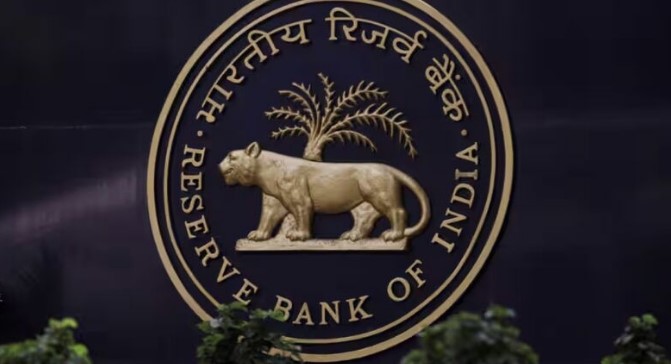Rate-Sensitive Stocks Gain Over 1% as RBI Maintains Repo Rate
Realty and banking stocks surged as the Reserve Bank of India (RBI) held the repo rate steady at 6.5% for the seventh consecutive time. Realty giants Sobha, Sunteck Realty, Macrotech Developers, and Brigade Enterprises saw rises between 2% and 7%. Major banking stocks, including HDFC Bank and ICICI Bank, also gained over 1%. The RBI’s unchanged stance reflects a cautious approach amidst global economic uncertainties.
Source: Financial Express
Sitharaman Retains Finance Portfolio, Faces New Challenges
Nirmala Sitharaman, reappointed as India’s Finance Minister, aims to address economic disparity in her second term under PM Modi. Despite high growth rates, rural discontent over jobs and inflation persists. Sitharaman’s tenure saw corporate tax cuts and fiscal consolidation, but coalition dynamics may impede further reforms. With India’s economy set to grow by 7.2% in FY2025, Sitharaman’s continuity offers market stability amidst anticipated policy tweaks.
Source: Reuters
Microfinance Loans Surge 24.5% to Rs 4.3 Trillion in FY24
India’s microfinance loan portfolio grew by 24.5% YoY to Rs 4.33 trillion in FY24, with total loan accounts rising to 149 million. NBFC-MFIs led the sector with Rs 1.71 trillion in loans, while banks saw a 20.9% growth to Rs 1.44 trillion. The regional distribution was dominated by East, Northeast, and South India. NBFC-MFIs’ debt-to-equity ratio improved, indicating potential for future growth.
Source: Business Standard
Centre Releases Rs. 1.4 Trillion in Tax Devolution to States
The Indian government has released an additional Rs. 1,39,750 crore in tax devolution to states for June 2024, bringing the total for FY2024-25 to Rs. 2,79,500 crore. This aims to boost state development and capital spending. Key allocations include Rs. 25,070 crore to Uttar Pradesh, Rs. 14,056 crore to Bihar, and Rs. 10,513 crore to West Bengal. The Interim Budget 2024-25 allocates Rs. 12.2 trillion for state tax devolution.
Source: PIB Delhi
Equity MF Inflows Surge 83% in May Despite Election Volatility
Equity mutual fund investments soared 83.4% in May, reaching a record Rs 34,697 crore, driven by strong inflows into new fund offers and mid- and small-cap funds. SIP inflows also hit a record Rs 20,904 crore, indicating robust retail investor confidence despite election-related market volatility. HDFC’s Manufacturing Fund significantly contributed with Rs 9,500 crore in inflows. The mutual fund industry’s AUM rose 2.8% to Rs 58.6 trillion.
Source: Financial Express
NDA Proposes 50% Assured Pension for Central Govt Staff under NPS
The NDA government is set to enhance pension benefits for central government employees under the National Pension System (NPS), offering up to 50% of the last basic pay as a pension. This proposal follows the establishment of a committee in 2023 to improve NPS benefits without reverting to the fiscally unsustainable Old Pension System (OPS). The new scheme could benefit approximately 8.7 million central and state government employees.
Source: Business Standard
Rupee and Govt Bonds Await US Inflation Data, Fed Policy Decision
The rupee closed at 83.3725 against the US dollar, up 0.1% for the week, and will be influenced by equity flows, inflation data, and the Federal Reserve’s policy. Strong US jobs data has already bolstered the dollar and US bond yields. Indian 10-year government bond yield rose to 7.0168% amid fiscal concerns following a weaker election outcome for Modi’s alliance.
Source: Business Standard
Modi 3.0 Approves Construction of 3 Crore Houses under PMAY
The Modi government has approved assistance for building 3 crore rural and urban houses under the Pradhan Mantri Awas Yojana (PMAY). This decision follows the release of ₹20,000 crore for the PM Kisan Nidhi funds, benefiting 9.3 crore farmers. Since 2015-16, PMAY has facilitated the construction of 4.21 crore homes with essential amenities. This move aims to address the growing housing needs of eligible families.
Source: Business Today
Nvidia Stock Price Plunges 90% After 10-for-1 Stock Split
Nvidia’s stock price has dropped to $120 from $1200.89 due to a 10-for-1 stock split. Despite this dramatic 90% drop, shareholder equity and ownership rights remain unchanged. Nvidia announced the split to make shares more affordable, issuing nine additional shares for each one held. The adjusted trading price will reflect this change when markets open on June 10. Nvidia’s stock has surged 200% over the past year, with a YTD increase of 135%.
Source: Financial Express
Apple Joins AI Race with Apple Intelligence and OpenAI Partnership
At WWDC 2024, Apple announced its entry into the generative AI space with Apple Intelligence, unveiling a billion-dollar partnership with OpenAI. This collaboration aims to integrate advanced AI capabilities across Apple devices, including iPhone, iPad, Mac, Apple Watch, and Vision Pro. Notably, Siri will receive its most significant upgrade since 2011, leveraging enhanced AI to dramatically improve functionality and user experience. Apple’s meticulous refinement strategy promises innovative and groundbreaking AI advancements.
Source: Financial Express
Life Insurance Industry’s New Business Premium Rises 15.5% in May
In May 2024, the life insurance industry’s new business premium (NBP) grew by 15.5% year-on-year to Rs 27,034.2 crore. LIC led the growth with an 18.7% increase in premiums, reaching Rs 16,690 crore. Private insurers saw a 9.8% rise in first-year premiums to Rs 10,343.8 crore. The group premium segment surged 13.14%, driven by LIC’s 20.9% growth. Individual premiums increased by 18.6%, with private insurers achieving 23% growth.
Source: Business Standard
OpenAI CEO Excited About ChatGPT Integration with Apple Devices
OpenAI CEO Sam Altman expressed enthusiasm over the integration of ChatGPT into Apple devices, set for later this year. Altman tweeted, “Very happy to be partnering with Apple to integrate ChatGPT into their devices later this year! Think you will really like it.” This integration will enhance Siri’s capabilities by making it better at gathering context and providing relevant output. Users will access ChatGPT for free, with premium features available to paid users.
Source: Business Today


Leave a Reply